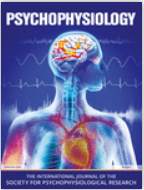The ability to understand emotions is associated with interoception‐related insular activation and white matter integrity during aging

Psychophysiology, издательство Blackwell Publishing Inc. (United Kingdom), том 57, № 5
Abstract
Cerebral small vessel disease (SVD) is a major cause of cognitive impairment in elderly people. While most research focuses on the role of the classical vascular risk factors in SVD, a description of the psychophysiological mechanisms leading to the age‐related brain damage may open new possibilities for prophylaxis. In the current study, we evaluated the associations between emotional abilities, interoception, and age‐related vascular white matter degeneration. The work was influenced, first, by multiple studies recognizing alexithymia as a cardiovascular risk factor; second, by theories of emotions linking body's allostasis and emotional regulation; and third, by neuroimaging data highlighting the shared role of the insular cortex in interoceptive and emotional processing. In a sample of older female adults (N = 30), we performed the Mayer–Salovey–Caruso Emotional Intelligence Test, functional MRI using the heartbeat detection task, and evaluation of white matter microstructural integrity using diffusion weighted imaging. The ability to understand and analyze emotions—one of the four components of emotional intelligence—was found to be associated with higher interoception‐related activation of the right anterior insula and preserved white matter microstructure. We interpret these results in light of the concept of Embodied Predictive Interoception Coding, which proposes that emotional processing, interoception, and allostasis (antecedent top‐down regulation of the body's internal milieu) may rely on the shared neural mechanisms of predictive coding. The study demonstrates feasibility of the investigation of cerebrovascular diseases form a psychophysiological perspective and calls for future research.